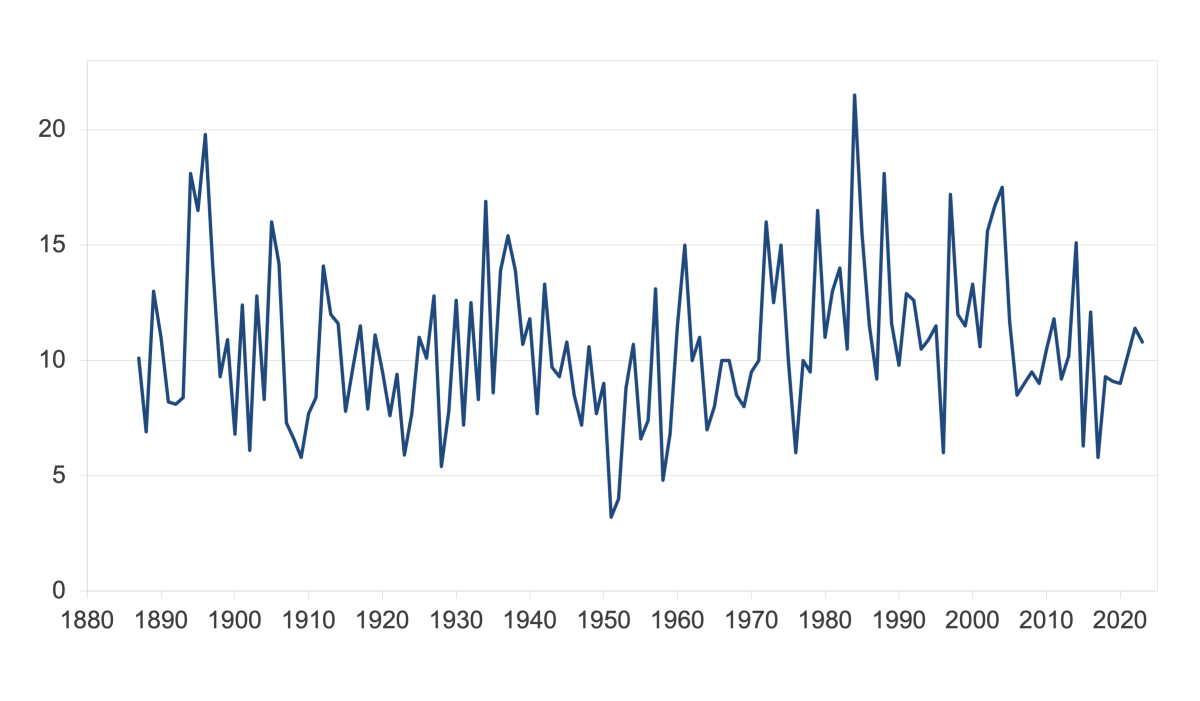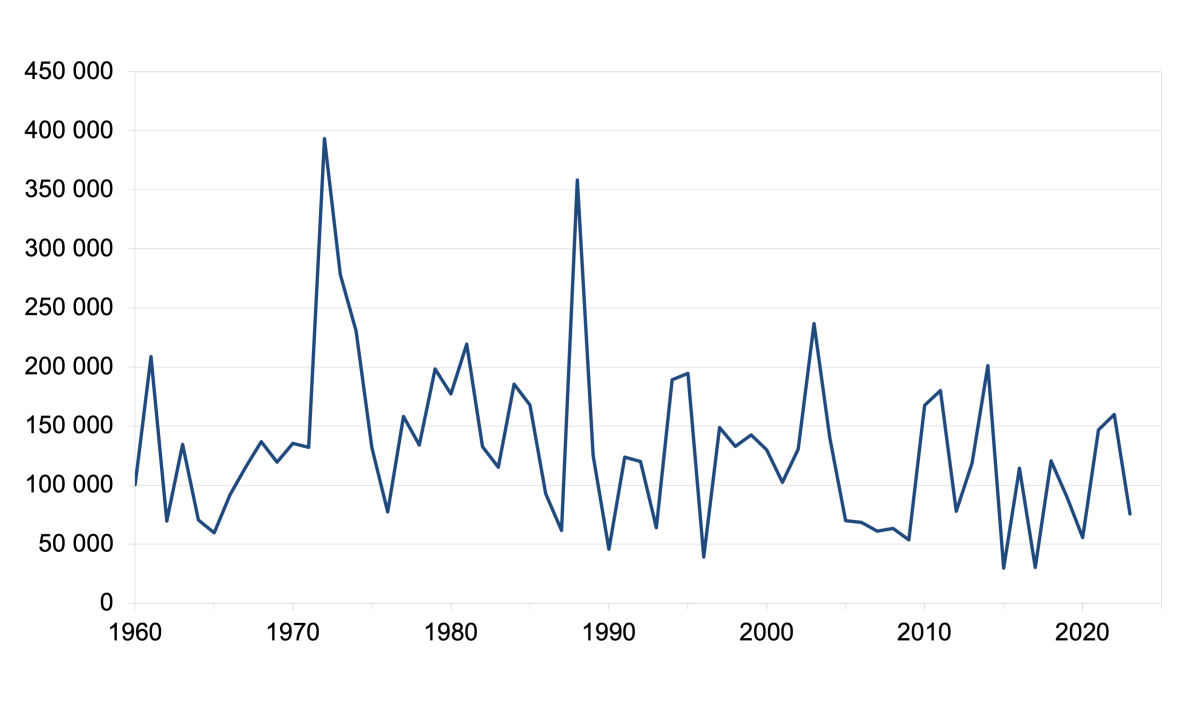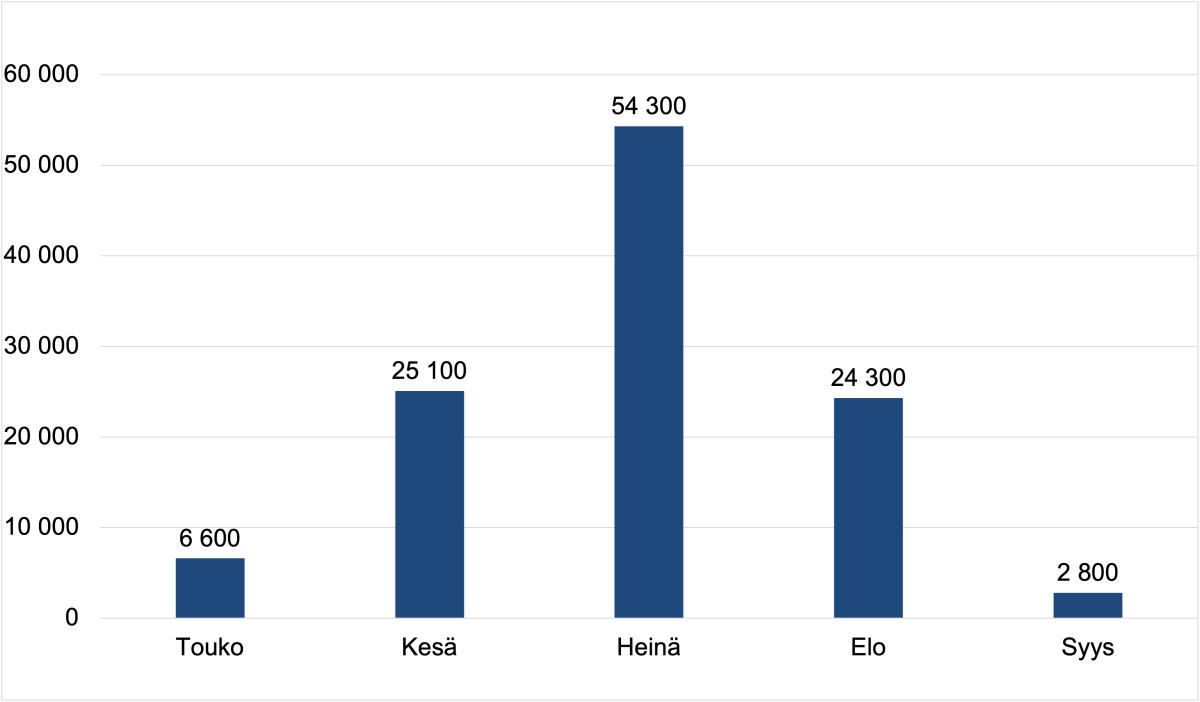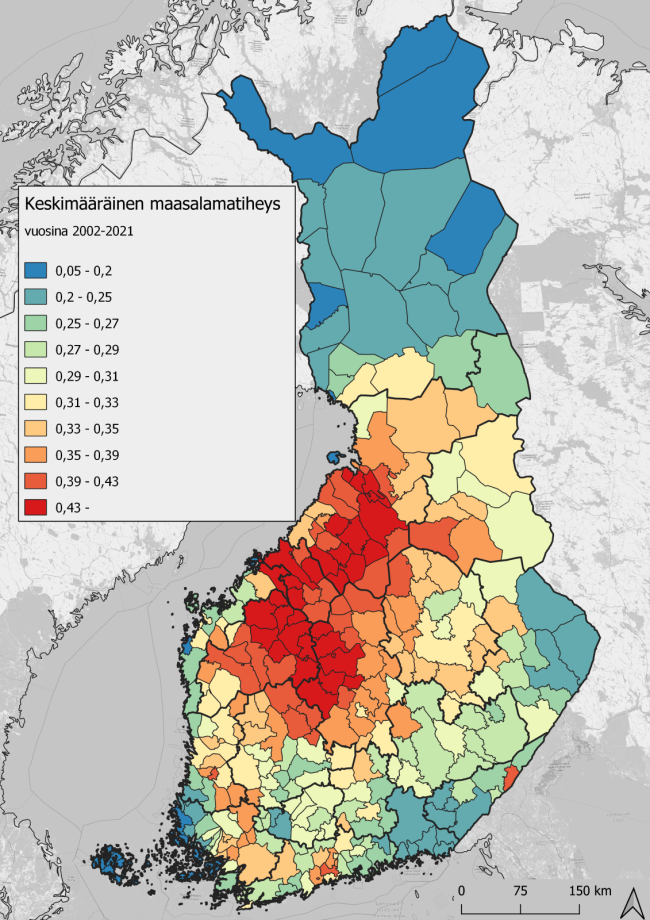Thunderstorms in Finland
Because of the high-latitude position of Finland (about 60-70N), the Finnish thunderstorm climatology can be termed as "modest". However, although the thunderstorm season is short, roughly from May to September, severe thunderstorms occur also in Finland every year.
Thunderstorm observation history in Finland
Finnish thunderstorm research dates back to 1887, when observations of thunder days at observation sites were established on routine basis. These human observations were partly replaced in 1960 by a network of flash counters. The model of the counter was a Finnish version of the so called CIGRE-counter, widely used in different parts of the world. The counter was not able to locate flashes, but merely gave information about the number of flashes. The network made possible the automatic observations of lightning (thunder days and flash density).
In the early 1980's, the network was further updated with a lightning location system (LLS). The system consisted of several electromagnetic sensors, which detected the low frequency pulses originating from the return strokes of ground flashes, and reported the signal azimuth. From the cross section of the azimuths, it was possible to estimate the strike point of the flash. The flash counter and LLS networks operated simultaneously for some time, which made possible the comparison of the data.

The old network was replaced in 1997 by the present LLS of FMI. The network consists nowadays of low frequency sensors (so called IMPACT-type) situated in Finland, Norway, Sweden, Estonia, Latvia and Lithuania. This combined network is called NORDLIS (Nordic Lightning Information System). The benefits of a cooperative network are great, because this way the detection efficiency and location accuracy are greatly improved, as well as the efficient coverage area is larger. FMI has also very high frequency sensors installed to their central processor. These sensors detect signals originating especially from the incloud processes of all kinds of lightning pulses.
The detection efficiency of NORDLIS is above 90 % in most parts of the network, and the median location accuracy is about 0.5 - 1 km. The efficiency is the best in the center parts of NORDLIS (namely in central Sweden and western Finland).
Thunderstorm climatology in Finland
Thunderstorms occur somewhere in Finland during about 100 days every year. The local thunder day number is about 11, meaning that on a fixed location, thunderstorms occur on average during 11 days. This number varies within the country so that the smallest values (below 10) are found in Lapland, and the highest values (about 20) in the central parts of Finland.

The number of ground flashes per year, and the derived ground flash density, varies largely from year-to-year. Typically, a major fraction of the annual flashes are due to just a few intense thunderstorm days, which tend to occur in mid-July. July is also the top-month of flashes, followed by June, August and May. Thunderstorms occur also outside the summer months, even in the mid-winter, but these storms produce typically only very small amount of flashes, so their effect to the statistics is negligible.


Lightning data in operation
The main user of lightning data is the operational weather forecasting, which uses lightning data to pinpoint the thunderstorm areas and estimate their movement and threat level. The research section of FMI develops special algorithms and tools for this purpose. Besides forecasters, also aviation, defence, and authorities are users of lightning data, and also for example insurance companies need information of located flashes.
